Snorkeling is fun, but being able to see the ocean floor when SCUBA diving is a surreal experience. Visually and physically, it feels like you are discovering another planet.
Despite fears of encountering hungry sea creatures, I ventured to Honolulu, Hawaii to learn to SCUBA. On the dive boat I became friendly with another student who was even more nervous than me– what a relief! Over the course of three days, I saw sea turtles, a reef shark, eels and many schools of fish.
Here are my tips for selecting and surviving a beginner SCUBA class. If you have a favorite diving spot or program, please share your tip by leaving a comment below!
1. Select a SCUBA certification class
In order to SCUBA safely and to rent equipment, you’ll first need to obtain recreational diving certification.
- Prior to your trip, you will need to choose a dive shop (or, “dive center”) that is affiliated with a SCUBA certification agency, such as PADI or NAUI. I chose a PADI-affiliated dive center because they were the most abundant in Oahu, and I opted to take an e-learning course instead of DVD or in-person instruction. The PADI e-learning class ($130) took me about 10 hours to complete and has mandatory tests at the end of each section.
- Once at your destination, you will arrive at your dive center for in-person lessons. The PADI Open Water Dive course typically spans 3 or 4 days (the duration depends on the center you’ve chosen; prices vary greatly). The first day is in confined water, which means you’ll learn basics in a pool or in shallow water. The subsequent days are spent diving off of a boat. I chose Hawaii Diving Adventures in Honolulu because I could spend the first day in the ocean off of Waikiki beach, instead of in a pool, and the SCUBA equipment was included with the course fee. If you’re very apprehensive about sharks or taking your face mask off underwater, you may want your first time using SCUBA to be in a pool.
>>Tip: Not interested in certification? Try “SNUBA”—a cross between snorkeling and SCUBA where you breathe from a hose.
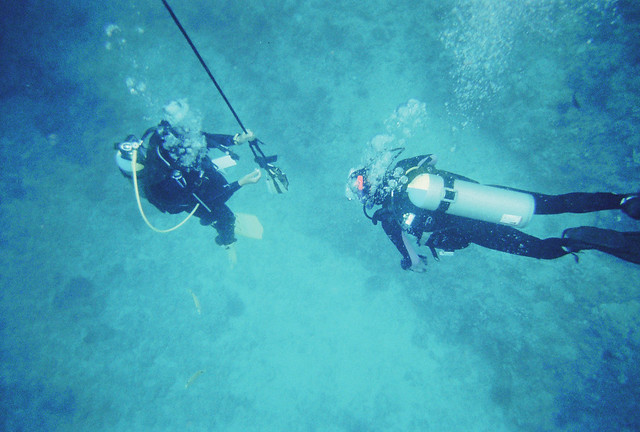
Instructor (left) and author (right) participating in an exercise for PADI Open Water Dive Certification. (Photo: Lauren Koch)
2. Consider buying your own mask and snorkel
Having been told by a certified diver to “always bring your own mask,” I purchased one in Oahu for $80– but it wasn’t any more effective than the rental mask. Like all new masks, the one I was using had a thick but invisible coating on it that needed to be taken off before using. It was a bit tedious to scrub it off with toothpaste. However, being wary of germs, I was glad that my nose was the only nose that had touched the mask. I also preferred using my own snorkel, which I brought from home. Any snorkel can be used when SCUBA diving; you’ll use the snorkel when you are above water and want to conserve your air tank. (When it comes to purchasing the rest of your SCUBA gear, money and quality are more serious considerations).
>>Tip: You need to scrub the coating off a new snorkel mask!
3. Make sure the wetsuit fits
When requesting a wetsuit, be sure to give the dive center accurate height and weight measurements to ensure fit. I overestimated my weight and underestimated my companion’s., so both of our suits were ill-fitting and made us uncomfortable on the dive. While the water in Honolulu was warm (in the 70s), my teeth were chattering on the first day in the water thanks to a 3mm-thick rental wetsuit that was too large for me and allowed water to seep in. With such a thin suit, I was extremely cold underwater but felt fine on the sunny boat. On the second day of diving, I upgraded my suit to double the thickness; I was only marginally cold underwater, but very hot on the boat. I’m planning on buying my own wetsuit for next time, one that is 7mm, because I will likely be diving in water that is colder than Hawaii.
>>Tip: To stay warm underwater, wear a properly sized wetsuit.
4. Prevent sunburn on your dive
Since I have a fair complexion, the sun ranks alongside sharks as one of my biggest fears. In between dives I coated my face with water-resistant 50+ SPF containing zinc oxide. I felt like a SCUBA mime with my face slathered in white paint and a black wetsuit. I neglected my ankles and hands; only applying lotion a few times to these forgotten areas resulted in an inevitable burn. A local dive shop had the solution: water gloves and a hood that covered my neck and hair. Turns out the hood was not only great for skin protection, but for keeping my long hair out of the way when maneuvering underwater and for staying warm.
>>Tip: A diving hood can prevent a farmer’s tan and help you stay warm underwater.
5. Plan for motion sickness
People prone to motion sickness tend to feel less ill when they’re close to the ocean floor than near the surface or resting on a rocky boat between dives. Don’t let motion sickness stop you from learning to dive! I personally take 25mg of diphenhydramine hydrochloride to combat motion sickness on the water.
>> Tip: The popular anti-nausea drug Dramamine contains diphenhydramine hydrochloride, the same active ingredient as Benedryl and Sominex tablets. Diphenhydramine is not advised for divers (or anyone) older than 60.
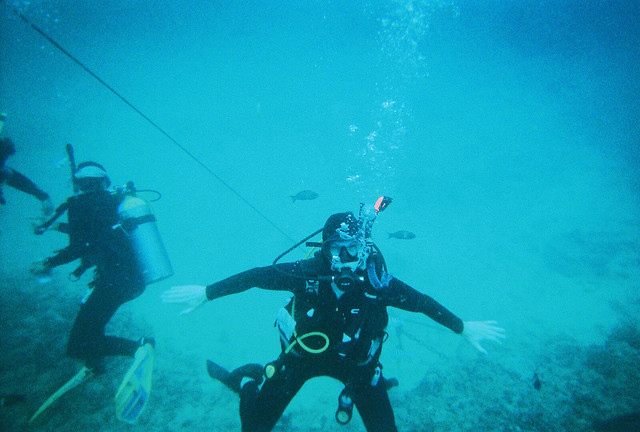
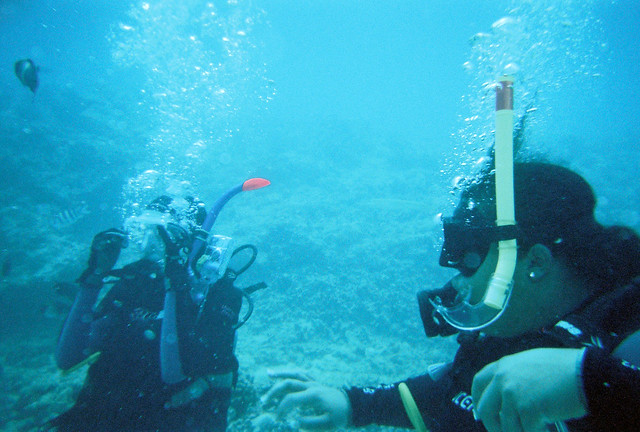
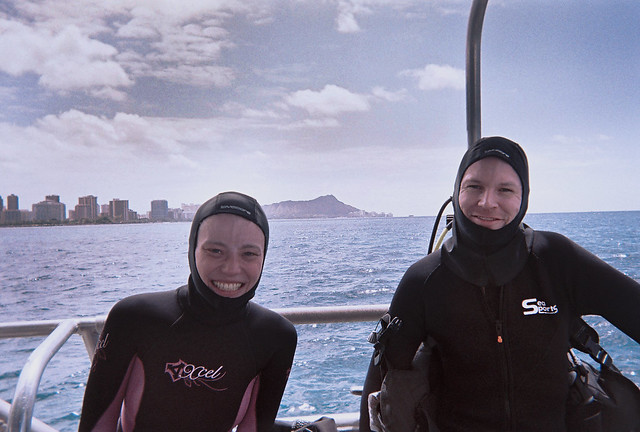
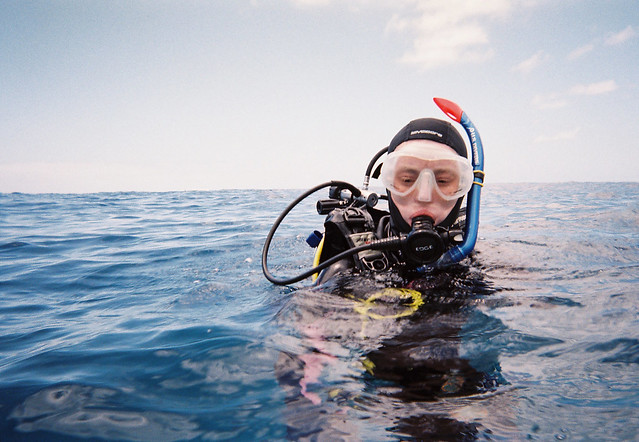

















I had my second dive ever there in Hawaii and I gotta say that it’s a diving paradise. Sure, there are lots of diving spots out there that are better and more beautiful than Hawaii’s but Hawaii will forever have a soft spot in my heart because my boyfriend proposed to me underwater! It was amazing!
I really enjoyed Lauren’s description of scuba diving! It was both funny and informative!
Mahalo for the write up. It’s always fun to have new divers out on the boat. Can’t wait till you guys come back.
I’ve only done snorkling, not scuba diving. Looks like a worthwhile thing to pursue!
Good tip on the wetsuit, as I would have never thought of that one on my own … cheers!
Great Post it will Definetly gonna help those still trying to get their first scuba dive…